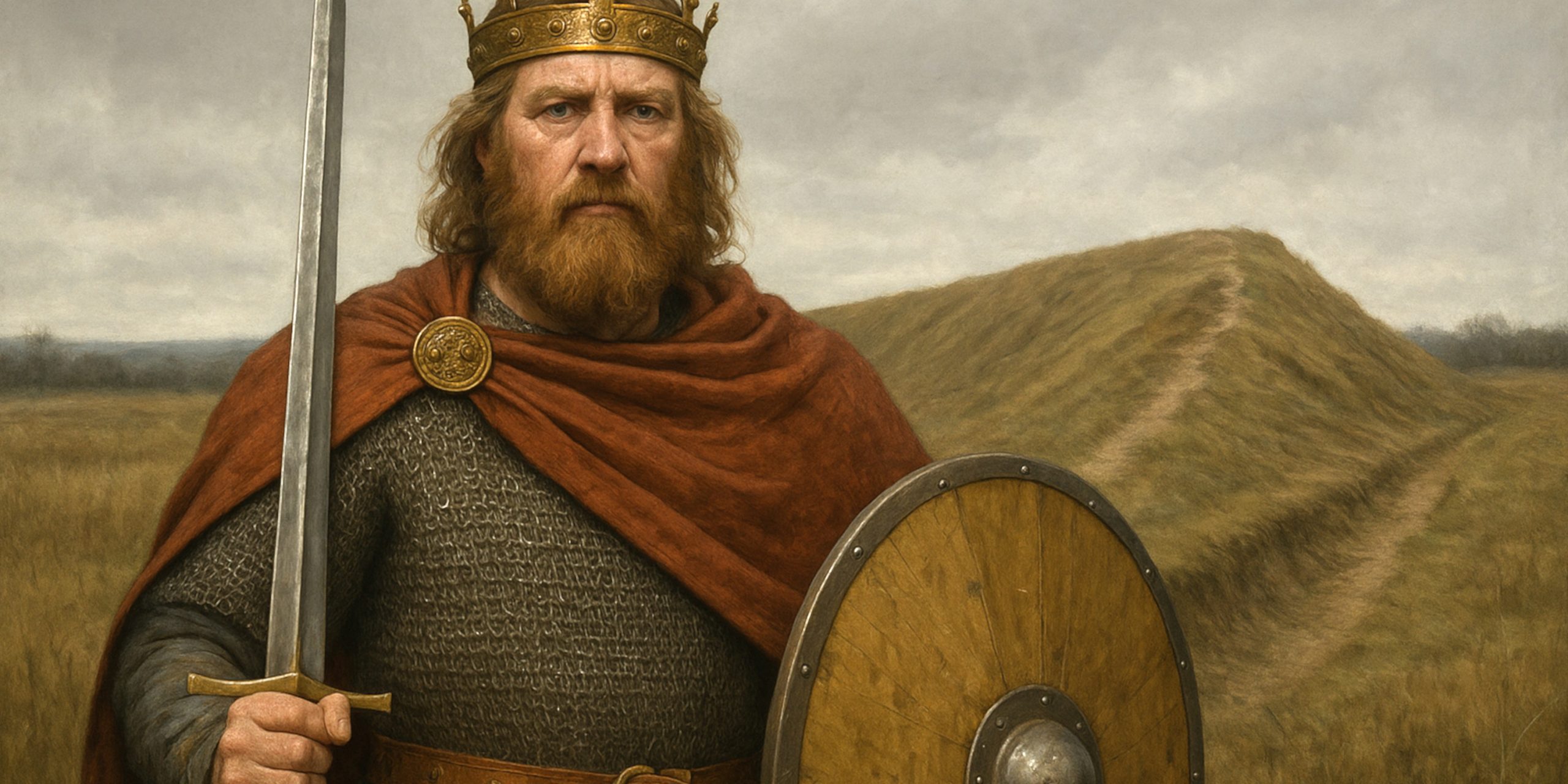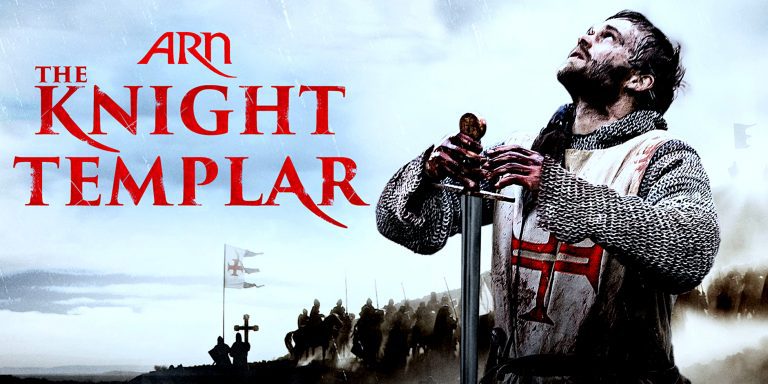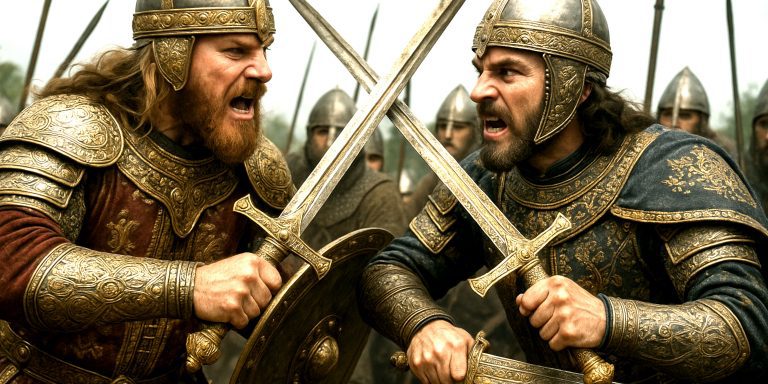
Offa (c. 730 – 29 July 796) ruled Mercia from 757 until his death. He followed a brief period of unrest and quickly reasserted control, consolidating Mercian dominance in the Midlands, Kent, Sussex, and, by the 780s, much of southern England. His name appears in coins and correspondence as “rex Merciorum,” and occasionally in less reliable charters as “rex Anglorum,” hinting at his view of sovereignty. Historians generally interpret this as political ambition rather than a genuine claim to a united England. Much of what we know comes from the Anglo-Saxon Chronicle, charters, and letters, particularly from Alcuin and others connected to Charlemagne’s court.
Arms and Armour
No weapons can be directly linked to Offa himself, but earlier eighth‑century finds such as those in the Staffordshire Hoard offer a clear sense of what martial equipment in Mercia might have looked like. These include elaborately decorated sword hilts, seaxes, and at least one helmet fragment. Royal military gear likely followed similar forms, though built to a higher standard and decorated to emphasise status.
Battles and Military Acumen
Offa’s rise and reign were underpinned by military strength. An early clash against the Welsh took place near Hereford in 760. Other campaigns occurred in 778, 784, and again in the year of his death in 796. While few details of these battles survive, their frequency suggests a persistent need to assert dominance along Mercia’s western frontier.
His most striking military gesture was Offa’s Dyke, a large linear earthwork running along much of the English‑Welsh border. Though medieval accounts claim it stretched from sea to sea, modern evidence places its true length at roughly 150 miles. Its exact function remains debated—part territorial boundary, part display of power.
Offa also supported the development of fortified settlements, or burhs, including Hereford, Bedford, Northampton, Oxford, and Stamford. These provided regional centres of defence and administration. His approach to military infrastructure directly influenced Alfred the Great a century later.
Diplomatic Reach
Offa was not merely a warlord. His political reach extended to Europe, particularly through exchanges with Charlemagne. Surviving letters discuss matters like trade, pilgrim protection, and diplomatic gifts. At one point, a proposed marriage between their children fell apart, leading to a temporary breakdown in relations, but peace was later restored.
Offa also wielded influence over church politics. He persuaded Pope Adrian I to establish a new archbishopric at Lichfield, reducing Canterbury’s power. This move likely aimed to ease the path for his son’s succession, and to consolidate royal control over religious authority in Mercia.
Coins, Currency, and Symbolism
Offa’s coinage was deliberate and refined. He replaced the light, poorly regulated sceattas with heavier, more consistent silver pennies, inspired by Carolingian currency reforms. These often carried his name, and in a rare move, coins were also struck bearing the image and name of his queen, Cynethryth—the only Anglo-Saxon queen to be so honoured.
Three gold coins from his reign survive. One is especially striking: a copy of an Abbasid dinar from 774, inscribed with Arabic script and the phrase “Offa Rex.” The orientation of the lettering and unfamiliarity with the language suggest it was a symbolic gesture rather than a practical imitation. It may have been intended for ceremonial or diplomatic use, rather than domestic trade.
Where to See Offa’s Legacy Today
The most iconic surviving artefact is the Offa dinar, now held by the British Museum. His silver pennies are found across several institutions, including local and national museums, often accompanied by detailed numismatic commentary.
Offa’s Dyke remains the largest surviving feature linked to him. Much of it can still be walked today, and the earthwork remains visible across long stretches of the English‑Welsh borderlands.
While no objects can be tied to Offa personally, the Staffordshire Hoard—discovered in 2009 near Lichfield—contains weapons, fittings, and decorative items from the same broad period and region. The hoard is displayed in museums near Lichfield and Stoke-on-Trent.
Recent Archaeological Insights
Recent excavations have raised questions about the dating of Offa’s Dyke. Radiocarbon analysis near Chirk suggests parts of the dyke may predate Offa by a century or more. This has challenged the long-held view that he was solely responsible for its construction and opened discussion about earlier border controls that Mercia might have inherited or expanded.
Other finds continue to emerge from former Mercian centres, especially near burh locations. These include fragments of imported pottery, domestic tools, and ecclesiastical fittings, helping to build a more detailed picture of Mercian society under Offa’s rule.
The Seven Swords Takeaway
Offa of Mercia was a calculating and formidable ruler. His reign blended military force, political diplomacy, coinage reform, and symbolic architecture to craft a legacy of enduring weight. While archaeology has complicated some assumptions—especially regarding the full extent of his personal achievements—the record still points to a king with vision and discipline. The remains of his reign, from coins to earthworks, remain among the most powerful testimonies to early English statecraft.
Watch the documentary:



